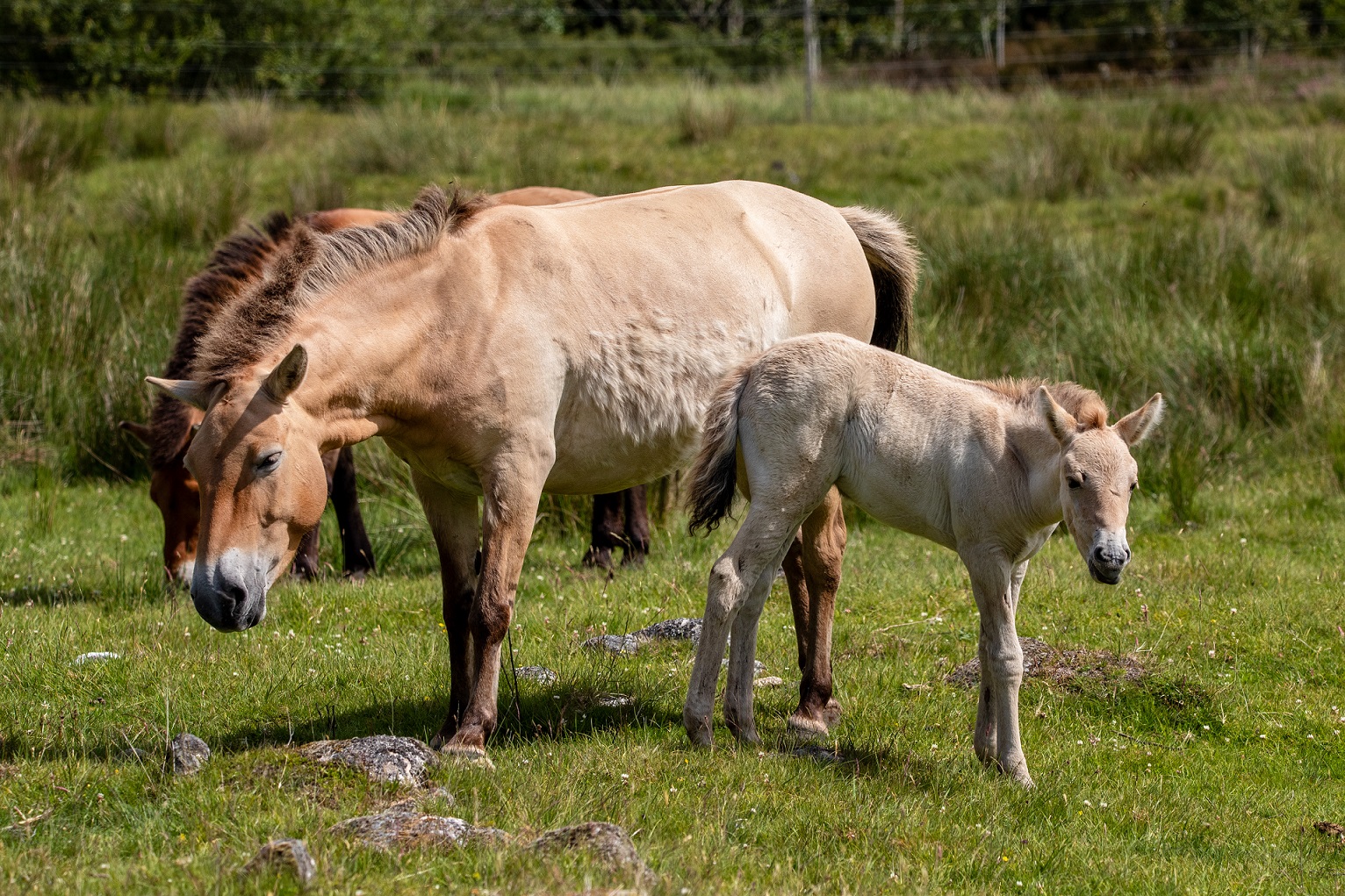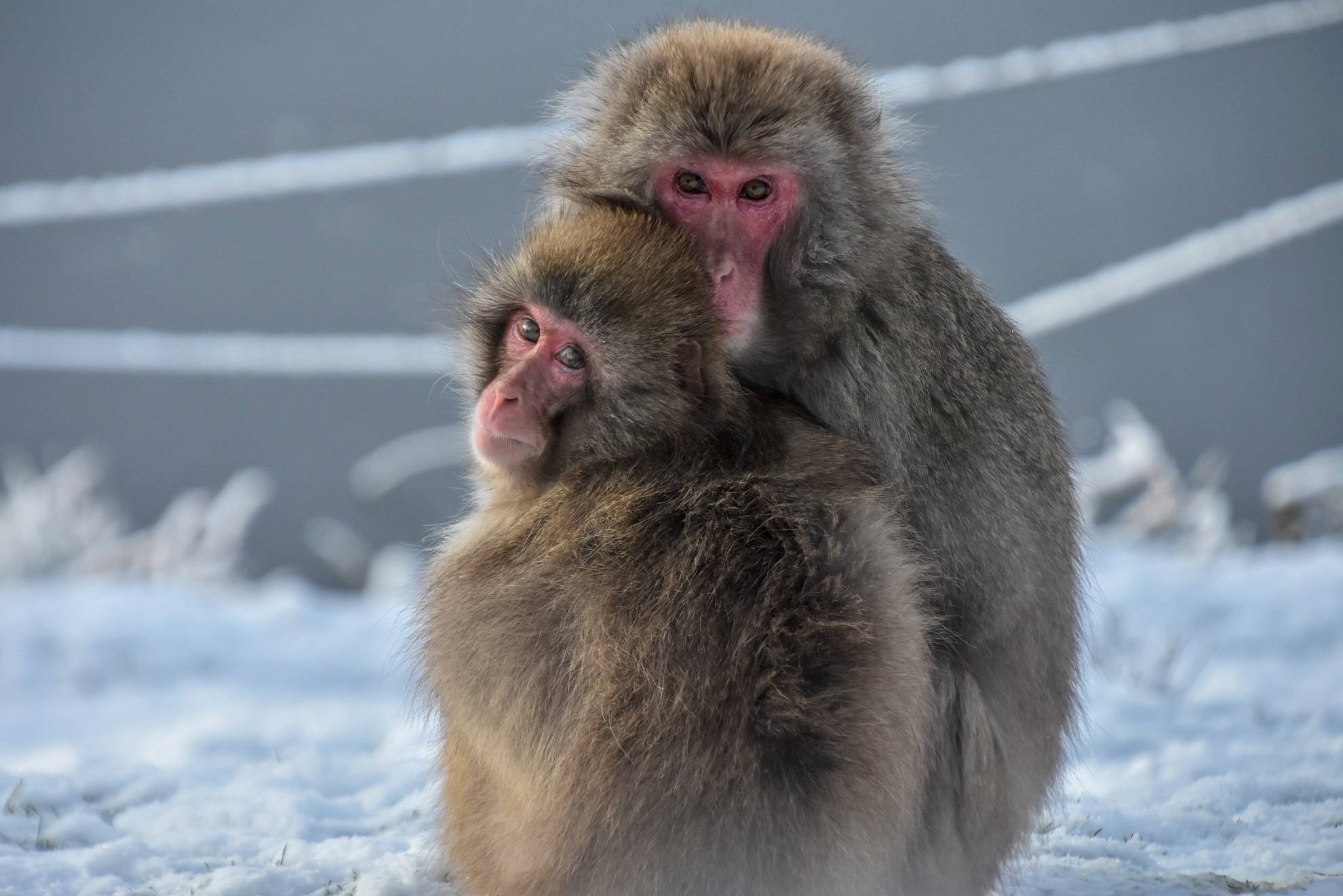Summer babies steal the show at Highland Wildlife Park
Posted 17 Jul 2025 in Highland Wildlife Park

There’s always something magical happening at Highland Wildlife Park, especially in summer. With long, sunny days to explore and warm weather, it’s the perfect time to meet some of our newest and cutest arrivals.
We have welcomed a female Przewalski's horse foal. Easy to spot thanks to her tiny size and light blonde coat, which stands out against the adults' darker brown colouring, she’s already a playful character. She can be seen rolling and playing in grass, crisscrossing the herd, causing mischief and exploring her new surroundings. The keepers have fondly named her Shalbaa.
Przewalski’s horse (pronounced “shu-val-skee”) are the only true wild horse species remaining, having never been domesticated. They are shorter and stockier than domesticated horses, with distinctive thick necks, large heads and a short upright mane with a black dorsal stripe running along their back to their tail.
The species became extinct in the wild in the 1960s. Thanks to conservation efforts made by captive breeding programmes within zoos, a reintroduction programme has seen them return to their native Mongolian plains, where they are called Takhi.
Despite these efforts, the Przewalski’s horse is classified as Endangered on the IUCN Red List of Threatened Species, highlighting the importance of the herd at Highland Wildlife Park and our excitement at the latest addition.
After many years of housing bachelors, our vicuna have become a breeding group. The park welcomed females in 2023, who delighted the keepers by having the first ever vicuna born in Scotland! Our most recent arrival in June, a female, has been named Kantu.
Vicuna are a relative of llamas, alpacas and camels. Like the Przewalski’s horse, they are non-domesticated. This is because of their timid, wild nature and preference for high alpine areas of the Andes Mountains in South America, which are unwelcoming to human development.
Elsewhere on the reserve, you will find a large herd of 17 red deer calves! Though they will eventually grow to be the nation’s largest land mammals, the calves are well camouflaged in the varied terrain of our drive-through reserve. This is because red deer are born with a spotted coat, which helps them hide away in vegetation and undergrowth. As they mature, this is replaced by the species’ rich red-brown coat.
It’s not just the park’s animals which have seen some new faces - native birds find the reserve to be a welcoming nesting site. This includes wading birds like lapwings, oystercatchers, snipe, red shank and various geese species. As you travel through the reserve, you're likely to see large groups of goslings and parents picking their way through the grasses.
While young animals are a highlight of any visit to Highland Wildlife Park, there are many of other seasonal sights to enjoy. Right now, the stags and bulls from five deer species – elk, reindeer, Bukhara, red and white-lipped - have rapidly growing antlers covered in soft velvet, which will be shed into hard antlers in August before the autumn rut.
If you want to see these young animals up close, see more summer adaptations and learn about the vital conservation work our charity carries out year-round, please do visit us at Highland Wildlife Park through the holidays.
Book online and save
